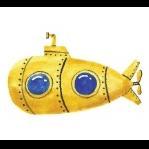OMG! Look at these hybrids and rare fishes!
-
Topics
-
Latest Update
-
11
Decom sales
WTS Hailea HK-300A chiller. (Retail at $660+) pm offer. These are the specifications of Hailea HK-300A: Power: 1/4HP Voltage: 220-240V Frequency: 50Hz Working Current: 1.8A Tank Capacity: 300L (recommended) Refrigerant: R134a Flow Rate: 1500-3000L/h Weight: 18.6kg Dimensions: 457 x 330 x 430mm -
1
-
1
WTS GMK
Lookin to let go 1pp frag of GMK cause SAF not paying me alr [emoji26] Price : $18 Location : Boon Lay Avenue Do pm me at 8753 8557 or telegram me at @owenlimkopi if interested! -
1
-
1
wts corals
clearing the following for space - cyna 15 - multi colour lobo 30 - some assorted zoas 20 - red acan 15 - bowerbanki 30 3 heads - torches 15 each - hammers 20 pr head on pm if interested or whatsapp 88604nine64 selling at lowest price just for clearance
-






Recommended Posts
Join the conversation
You can post now and register later. If you have an account, sign in now to post with your account.